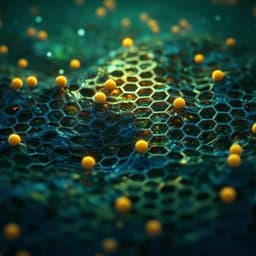
Biology
Engineering artificial photosynthesis based on rhodopsin for CO₂ fixation
W. Tu, J. Xu, et al.
This groundbreaking research by Weiming Tu, Jiabao Xu, Ian P. Thompson, and Wei E. Huang introduces an innovative artificial photosynthesis system that harnesses rhodopsin's proton-pumping capabilities and integrates microbial carbon fixation to significantly enhance CO₂ conversion efficiency.
Playback language: English
Related Publications
Explore these studies to deepen your understanding of the subject.







